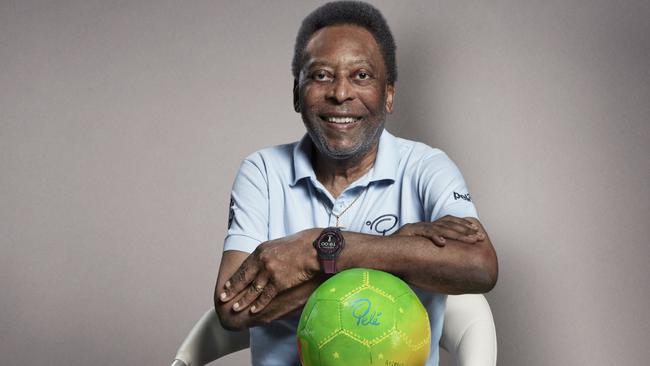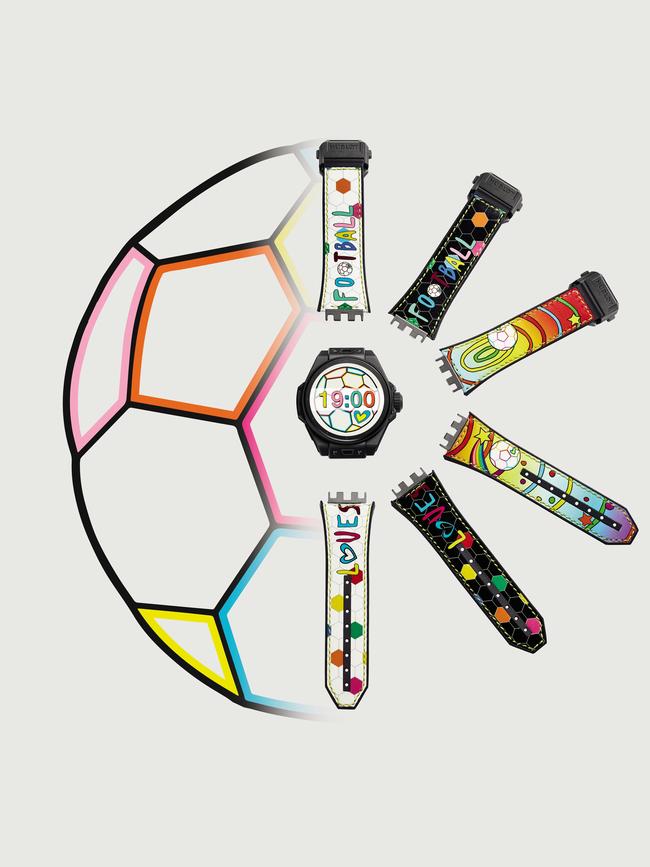World Cup 2022 a win for Hublot’s football link
Hublot’s radical move to partner with football and other populist sports is scoring big points for the watch brand that dares to be different.

Inside Moscow’s Luzhniki Stadium, time is running out for Croatia, who are trailing 4-2 to France in the 2018 World Cup Final. Midfield schemer Luka Modric picks up the ball and attempts to launch a comeback by jinking a speculative ball upfield. It’s intercepted by France’s Samuel Umtiti and Les Bleus regain possession. Andreas Griezmann wins a foul on the halfway line. The 90 minutes are up and, the eyes of the stadium – and indeed the world – focus on the FIFA match official, who steps out with a digital board to signal five minutes of extra time.
-
Explore the Watch and Jewellery special edition of WISH, available online and in print on Friday, 18 November.
-
Except that’s not the only information on the board. It also bears the name of the Swiss watch brand Hublot, and is designed to resemble its Big Bang model with its exposed screws and distinctive case shape. This board is held aloft every time a substitution is made during each of the World Cup’s 64 games. “Even though we only see our brand for 10 to 15 seconds per game, it’s enough, because we bring Hublot to the viewer,” managing director Ricardo Guadalupe explains. “Billions of people have seen this board and they now know that Hublot is a watch brand.”

Guadalupe’s talk of “billions” may sound hyperbolic but it’s borne out by independent figures for what is the most viewed sporting event on the planet. FIFA reported that more than 1.1 billion tuned in to France’s victory over Croatia, and some 3.57 billion – more than half the global population aged four and over – caught a World Cup game on TV. Throughout every match, lurking in the viewers’ peripheral vision, was Hublot, quietly infiltrating the minds of football fans all over the world.
Founded in 1980, Hublot is still a fairly young brand in watch terms, but started to build serious momentum after Jean-Claude Biver bought a minority stake in 2004. Having transformed the fortunes of a host of brands from Blancpain to Omega, Biver was renowned as a marketing genius and quickly set about hotwiring Hublot’s growth. Responsible for the Omega deal that got the brand onto the wrist of a certain James Bond, Biver wanted Hublot to find partnership opportunities that could make a similar impact. “We said to ourselves in 2006: ‘Which sport can we can go into? Which one could help us to drive brand awareness, to make Hublot better known?’” Guadalupe says.”
Luxury watch brands traditionally align with “premium sports” that help to reinforce their lofty status. Sports such as golf, tennis, Formula One, sailing and equestrian already had long-established watch sponsors that were impossible to dislodge. But no brand had made a serious move into football, the biggest spectator sport of them all. “They feared that it’s too cheap, that it’s not luxurious enough,” Guadalupe says.

As a brand renowned for challenging the status quo, Hublot was more open minded. That reputation was formed at the brand’s foundation, when Hublot founder Carlo Crocco startled the industry by putting a gold watch on a utilitarian rubber strap. No one had done this before, but Crocco’s bold move paved the way for the likes of Rolex, Patek Philippe and Audemars Piguet to follow. Given this subversive past, Hublot was hardly fazed by football’s mass-market status – that was the sport’s whole attraction.
In 2006, the brand partnered with the Swiss national football team, sending every member of the squad off to the Germany World Cup with a Big Bang on their wrists. From there, Hublot went football crazy. It became the official timekeeper for the 2008 European Championships and followed up with similar roles at every World Cup since, in South Africa (2010), Brazil (2014), Russia (2018), and in Qatar. It also took on the timekeeper role for the English Premier League, the Champions League and the Europa League while inking sponsorship deals with powerhouse clubs Juventus, Chelsea and Boca Juniors. Nor did it miss out on the game’s superstars. Pele and the late Diego Maradona – were signed as Hublot ambassadors, while France’s Kylian Mbappe was also snapped up last year.

Hublot refuses to disclose the cost of its footballing partnerships, but acknowledges that they run into the millions. The investment looks to be paying off. Chrono24, the world’s biggest trading platform for pre-owned watches, tracked its site traffic for Hublot during several key games of the 2018 World Cup,. “The numbers don’t lie,” it said. “Every time a player is substituted, the world can see the official’s substitution board and Hublot’s page views rise immediately and significantly.”
This success has prompted Hublot to expand into other populist sports that also command eye-popping reach. When boxing superstar Floyd Mayweather took on Manny Pacquiao and Conor McGregor, for example, Hublot’s name was emblazoned on his black shorts. It also became the official timekeeper for the Cricket World Cup. Hublot’s decision to pair a luxury product with such mass-market properties may be bold and unorthodox, but so was daring to put a gold watch on a rubber strap.

To join the conversation, please log in. Don't have an account? Register
Join the conversation, you are commenting as Logout